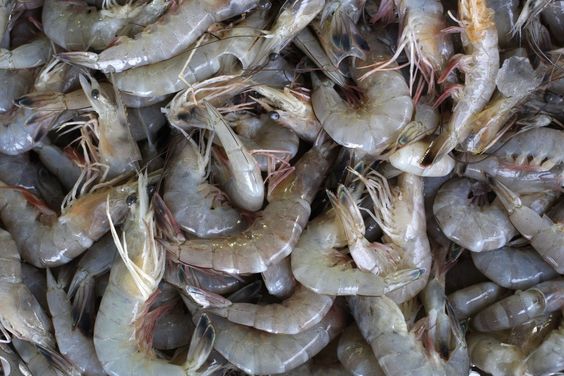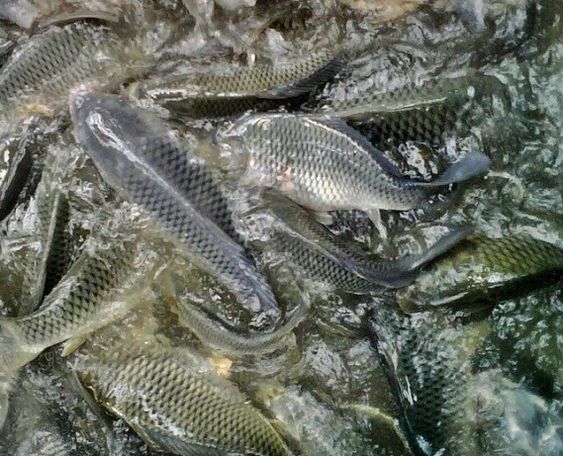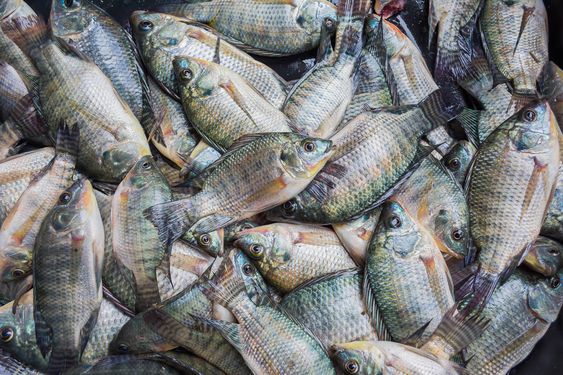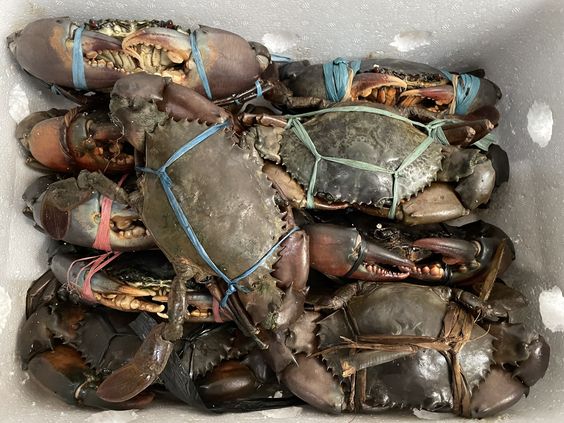Vannamei Shrimp Health Management: A Comprehensive Guide
This comprehensive guide delves into the world of Vannamei shrimp health management, equipping you with the knowledge and strategies to cultivate healthy, thriving shrimp populations.
Vannamei shrimp health management is a holistic approach that encompasses all aspects of shrimp culture aimed at preventing, controlling, and mitigating diseases. It prioritizes proactive measures to create an environment conducive to optimal shrimp health and minimize the risk of outbreaks.
Contents
Benefits of Effective Vannamei Shrimp Health Management
- Increased Survival Rates: By preventing and managing diseases, you can significantly reduce shrimp mortality, leading to higher yields and improved profitability.
- Enhanced Growth Performance: Healthy shrimp have better feed conversion rates and grow faster, maximizing your harvest potential.
- Improved Water Quality: Proactive health management practices contribute to maintaining optimal water quality, a crucial factor for shrimp health.
- Reduced Reliance on Therapeutants: By focusing on preventive measures, you can minimize the need for antibiotics and other chemical treatments, promoting sustainable and environmentally responsible farming practices.
- Enhanced Market Value: Healthy shrimp with a clean bill of health often fetch premium prices in the marketplace.
Objectives of Vannamei Shrimp Health Management
The core objectives of Vannamei shrimp health management are:
- Preventative Measures: Implement strategies to minimize the risk of disease introduction and spread.
- Early Detection: Develop methods for early identification of potential health issues.
- Disease Control: Apply appropriate interventions to manage and mitigate existing diseases.
- Environmental Optimization: Create and maintain optimal water quality and pond conditions for shrimp health.
- Stress Reduction: Minimize stress factors that can compromise shrimp health.
- Nutritional Optimization: Provide a balanced and complete diet to support shrimp growth and immune function.
Key Elements of Vannamei Shrimp Health Management
A successful Vannamei shrimp health management program incorporates several crucial elements:
- Biosecurity: Implementing strict biosecurity protocols is the foundation of good health management. This includes measures like disinfection of equipment, quarantine procedures for new stock, and restricted access to the farm to minimize the risk of introducing pathogens.
- Water Quality Management: Maintaining optimal water parameters, such as temperature, dissolved oxygen, pH, ammonia, and nitrite levels, is essential for shrimp health. Regular water quality monitoring and adjustments are crucial.
- Pond Management: Proper pond preparation, including disinfection and bottom soil management, helps to create a healthy environment for shrimp growth. Maintaining adequate water depth and circulation is also important.
- Stocking Density: Overcrowding can lead to stress and disease outbreaks. Stocking ponds at appropriate densities based on water quality and pond size is vital.
- Feed Management: Providing a high-quality, balanced diet formulated for the specific needs of Vannamei shrimp ensures they receive the necessary nutrients for optimal growth and immune function.
- Health Monitoring: Regularly monitoring shrimp health through visual inspection, water quality analysis, and diagnostic tools allows for early detection of potential issues.
- Probiotics: Supplementation with beneficial bacteria (probiotics) can help improve water quality, digestion, and the shrimp’s immune system.
- Disease Management: In case of a disease outbreak, swift and appropriate intervention with treatments and management strategies is crucial to minimize losses.
Advanced Strategies for Vannamei Shrimp Health Management
Beyond the core elements, several advanced strategies can further enhance Vannamei shrimp health:
- Disease Profiling: Understanding the specific disease risks prevalent in your region allows for targeted preventative measures.
- Vaccination: Vaccination against specific viral diseases can be a valuable tool in some regions.
- Immunostimulants: Supplementation with specific compounds that boost the shrimp’s immune system can be beneficial in some cases.
- Precision Aquaculture: Utilizing advanced technologies like sensors and real-time monitoring systems can provide detailed insights into water quality and shrimp health, allowing for more precise management decisions.
Best Practices for Implementing Vannamei Shrimp Health Management
Vannamei Shrimp Health Management,Building upon the foundation established in the previous section, let’s delve deeper into specific best practices for implementing Vannamei shrimp health management:
1. Biosecurity: Creating an Impenetrable Fortress
- Disinfection: Establish a thorough disinfection protocol for all equipment and vehicles entering the farm. This can include using chlorine, iodine, or formalin solutions.
- Footwear: Implement a designated footwear policy, requiring farm personnel to wear disinfected boots or footwear to prevent the introduction of pathogens.
- Quarantine: Newly acquired shrimp should undergo a quarantine period in a separate pond before introduction to the main culture ponds. This allows for observation and disease detection before potential contamination.
- Fencing and Signage: Secure your farm perimeter with fencing and signage to restrict unauthorized access.
- Training: Regularly train your staff on biosecurity protocols to ensure everyone understands their role in maintaining a healthy environment.
2. Water Quality: Maintaining the Perfect Balance
- Regular Testing: Conduct regular water quality testing for key parameters like temperature, dissolved oxygen (DO), pH, ammonia, nitrite, and alkalinity. Aim for consistent, optimal levels for each parameter based on your specific shrimp life stage.
- Aeration: Maintain adequate DO levels through aeration systems like paddlewheels or diffusers. Low oxygen levels can stress shrimp and make them susceptible to diseases.
- Biofloc Technology: Consider implementing biofloc technology, which utilizes naturally occurring microorganisms to improve water quality and reduce organic waste.
- Partial Water Exchange: Regular partial water exchanges (10-20% every few days) help remove accumulated waste products and maintain proper salinity.
3. Pond Management: Building a Healthy Foundation
- Preparation: Prior to stocking, thoroughly dry and disinfect ponds. This eliminates potential pathogens residing in the bottom soil.
- Liming: Apply lime to adjust soil pH to a neutral or slightly alkaline range (pH 7.0-8.5) suitable for Vannamei shrimp.
- Predatory Fish Control: Implement measures to manage unwanted fish populations within ponds. These fish may compete with shrimp for resources or even prey on them.
- Bottom Management: Regularly monitor and manage the buildup of organic matter on the pond bottom to prevent oxygen depletion and the release of harmful gases.
4. Stocking Density: Finding the Sweet Spot
- Carrying Capacity: Consider the carrying capacity of your pond, which is the maximum number of shrimp it can support while maintaining optimal water quality. Overstocking leads to stress, competition for resources, and disease outbreaks.
- Size Grading: Grading shrimp by size before stocking helps ensure even growth and reduces competition for food among individuals.
5. Feed Management: Providing the Right Fuel
- High-Quality Feed: Choose high-quality, commercially formulated shrimp feed that meets the specific nutritional requirements of Vannamei shrimp at different life stages.
- Feed Rationing: Provide feed at appropriate amounts and frequencies to avoid waste and maintain water quality. Utilize feeding trays or automatic feeders for efficient feed management.
- Freshness: Ensure feed is fresh and stored properly to prevent spoilage and nutrient loss.
6. Health Monitoring: Early Detection Saves the Day
- Visual Inspection: Regularly inspect shrimp for signs of lethargy, abnormal behavior, discoloration, or other physical abnormalities that may indicate disease.
- Microscopic Examination: Conduct periodic microscopic examinations of shrimp tissue samples to detect potential pathogens.
- Water Quality Monitoring: Consistent water quality monitoring allows for early identification of potential problems that could stress shrimp or promote disease outbreaks.
7. Probiotics: Introducing Beneficial Allies
- Selection: Choose commercially available probiotic supplements specifically formulated for Vannamei shrimp aquaculture.
- Benefits: Probiotics can improve water quality by breaking down organic matter, enhance shrimp digestion, and potentially boost their immune system.
- Application: Follow manufacturer’s recommendations for application rates and frequency of probiotic supplementation.
8. Disease Management: Taking Action When Needed
- Rapid Response: A swift response is crucial when a disease outbreak is suspected. Isolate affected ponds and implement appropriate treatment strategies based on the identified disease.
- Diagnosis: Seek professional assistance from a veterinarian or aquaculture specialist for accurate disease diagnosis and appropriate treatment recommendations.
- Record Keeping: Maintain detailed records of any disease outbreaks, including the suspected cause, treatment strategies employed, and the outcome.
Vannamei shrimp health management is an ongoing process that requires vigilance, knowledge, and a commitment to best practices. By implementing a comprehensive health management program, shrimp farmers can create an environment that fosters healthy shrimp growth, minimizes disease risks, and maximizes profitability






